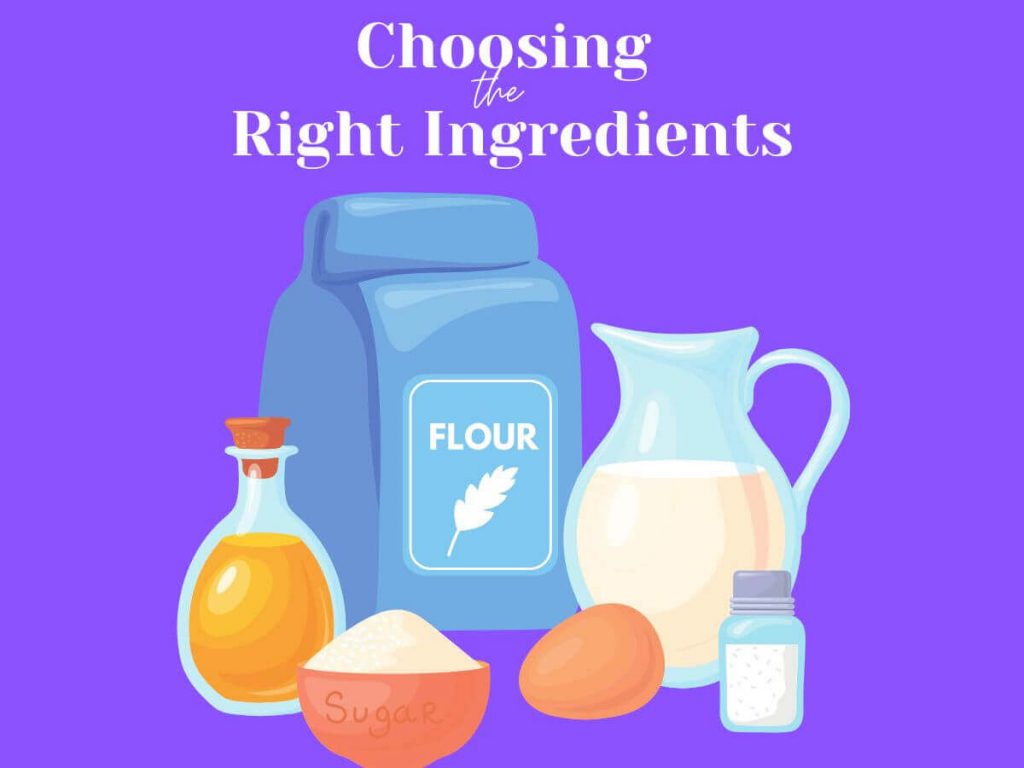Do you find yourself struggling to achieve bakery-quality results in your home kitchen? Many home bakers face challenges like uneven bakes, dense textures, or flavors that fall flat. It’s frustrating when your efforts don’t match the picture-perfect creations you see online or in cookbooks.
Imagine the disappointment of spending hours on a special cake, only to have it come out dry or lopsided. Or the letdown of presenting cookies that are too crispy or lack that professional sheen. These setbacks can make you feel like you’re missing some secret knowledge that professional bakers have.
But here’s the good news: you can elevate your baking game with some professional techniques. This guide will share tips and tricks from professional bakers that you can easily apply in your home kitchen. From mastering temperature control to understanding ingredient quality, you’ll learn how to tackle common baking problems. With these insights, you’ll be able to create bakery-worthy treats that will impress your family and friends. Get ready to transform your baking from amateur to amazing!
Table of Contents
The Importance of Precision: Measuring Like a Pro

Precision is the foundation of successful baking. Unlike cooking, where improvisation is often welcome, baking relies on exact measurements to achieve the desired texture, flavor, and structure. Using a digital kitchen scale is one of the best ways to ensure accuracy. Scales allow you to measure ingredients by weight, eliminating inconsistencies caused by scooping or packing ingredients like flour or sugar 1,7. For smaller quantities, such as spices or yeast, micro scales that measure in increments as small as 0.1 grams can be incredibly useful 7.
Measuring tools like cups and spoons should also be used correctly. For dry ingredients, level off the top with a flat edge to avoid adding too much. For liquids, use a clear measuring cup and check the measurement at eye level to ensure accuracy 1,7. These small habits can make a big difference in your final results. Guesstimating or skipping precise measurements can lead to dense cakes, flat cookies, or overly salty bread 1,7.
Understanding ingredient ratios is another key aspect of precision. Many recipes are based on specific proportions of flour, fat, sugar, and liquid. Deviating from these ratios can disrupt the chemistry of your bake. By focusing on accurate measurements and understanding the role each ingredient plays, you’ll create consistent and professional-quality baked goods every time 7.
Mise en Place: Setting Yourself Up for Success

Mise en place, which means “everything in its place,” is a simple yet powerful technique that can transform your baking experience. Start by clearing your workspace and organizing your tools and ingredients before you begin. This ensures you have everything you need and helps prevent mistakes like forgetting an essential ingredient 2,5.
Begin by reading the recipe thoroughly from start to finish. This allows you to identify steps that require preparation, such as softening butter or bringing eggs to room temperature. Once you understand the recipe, measure and prep all your ingredients in advance. Use separate bowls for dry and wet ingredients and line them up in the order they’ll be used 2,5. Cracking eggs into a separate bowl is also helpful to avoid shells accidentally falling into your batter 1,5.
By practicing mise en place, you’ll work more efficiently and confidently. It eliminates the need to pause mid-recipe to search for tools or measure ingredients, allowing you to focus fully on mixing and baking. This method not only improves your results but also makes the process more enjoyable and stress-free 2,5.
Temperature Matters: Mastering Heat Control

Temperature plays a critical role in baking, affecting everything from dough fermentation to how cakes rise in the oven. For example, room-temperature ingredients like butter and eggs mix more evenly into batters, creating smoother textures 1. Cold butter, on the other hand, is essential for flaky pastries like pie crusts or scones because it creates steam pockets during baking 1.
Oven temperature is equally important. Many home ovens have uneven heat distribution or inaccurate thermostats, so using an oven thermometer ensures precision. Preheating your oven fully before placing anything inside is crucial for consistent results 4,7. Avoid opening the oven door frequently during baking, as this can cause heat loss and uneven cooking 1,4.
For bread bakers, controlling dough temperature during fermentation is key to achieving optimal rise and texture. Professional bakers often aim for a Desired Dough Temperature (DDT) around 90°F by adjusting water temperature or warming their kitchen environment 4. Understanding how temperature affects each stage of baking allows you to make adjustments that elevate your results from good to exceptional 1,4.
Ingredient Quality: Choosing the Best for Your Bake

High-quality ingredients are the cornerstone of exceptional baking. Flour, for example, should be fresh and suited to your recipe—bread flour for chewy loaves or cake flour for tender cakes. Using unsalted butter allows you to control the salt content in your recipe, while fresh eggs contribute to better structure and flavor. Vanilla extract, rather than imitation vanilla, adds depth and richness to desserts like cookies and cakes 8.
Seasonal and local ingredients can elevate your baking even further. Fresh fruits, such as berries in summer or apples in autumn, bring natural sweetness and vibrant flavors to pies and tarts. Similarly, high-quality chocolate with a higher cocoa content enhances the taste of brownies or ganache. For yeast-based recipes, using active dry or instant yeast from a trusted brand ensures consistent results 4,8.
Paying attention to ingredient storage is equally important. Store flour in airtight containers to prevent it from absorbing moisture, and keep spices in a cool, dark place to maintain their potency. By prioritizing quality and proper storage, you’ll not only improve the flavor of your baked goods but also achieve more consistent results every time you bake 8.
Essential Techniques: Mixing, Folding, and More

Mastering mixing techniques is crucial for achieving professional results in baking. Mixing methods vary depending on the recipe—creaming butter and sugar creates air pockets for light cakes, while folding gently incorporates airy ingredients like whipped cream or egg whites without deflating them 1,3. Folding requires slow, deliberate motions: scrape the spatula along the bottom of the bowl, lift the mixture over itself, and rotate the bowl to ensure even incorporation 1,9.
Overmixing is a common mistake that can lead to dense or tough baked goods. For example, when making muffins or quick breads, mix just until the dry ingredients are moistened to avoid developing too much gluten. On the other hand, kneading bread dough requires vigorous mixing to build gluten structure for elasticity and chewiness 3,7.
Understanding when to use each technique is key. Stirring is ideal for combining ingredients without aeration, while whisking adds air for fluffier batters. Practice these methods with simple recipes before tackling more complex ones like soufflés or sponge cakes. With time and patience, these techniques will become second nature 7.
The Science of Leavening: Understanding Rising Agents

Leavening agents are essential for creating light and airy baked goods by introducing gases like carbon dioxide into doughs and batters. These gases expand during baking, giving structure to cakes, breads, and cookies 4. There are three main types of leavening agents: physical (air or steam), chemical (baking soda or powder), and biological (yeast or sourdough starter) 6,8.
Chemical leaveners like baking soda require an acidic ingredient (e.g., lemon juice or yogurt) to activate and release carbon dioxide bubbles. Baking powder contains both an acid and a base, making it a convenient all-in-one leavener for recipes without additional acids. Double-acting baking powder works in two stages—when mixed with wet ingredients and again when exposed to heat—ensuring consistent rise 4,6.
Biological leaveners like yeast rely on fermentation to produce gas. Active dry yeast must be proofed in warm water before use, while instant yeast can be added directly to dough. Sourdough starters use wild yeast and bacteria for a slower rise that adds complex flavors. Understanding how these agents work allows bakers to choose the right one for each recipe and troubleshoot issues like insufficient rise or dense textures 4,6.
Troubleshooting Common Baking Problems

Even experienced bakers face challenges in the kitchen. One common issue is cakes that fall in the center. This can happen if your oven temperature is too low, you’ve under-baked the cake, or used too much baking powder 1. To fix this, use an oven thermometer to ensure accurate temperature and follow recipe instructions carefully. Another frequent problem is dry cakes, which can result from over-baking or using too much flour. To avoid this, set a timer and check your cake a few minutes before the recipe suggests it will be done 1.
Cookies can also be tricky. If your cookies are spreading too much and becoming flat, try not to over-mix the butter and sugar. Aim to cream them together for just 1-2 minutes 6. For misshapen cookies, there’s a simple fix: right after taking them out of the oven, use an offset spatula to gently push the edges towards the center, creating a more circular shape 6. This works best while the cookies are still hot and pliable.
Sometimes, cake edges can become too dark or caramelized. This might be due to using dark metal pans, which absorb heat more efficiently than light-colored ones. Switch to light-colored metal pans for more even baking 8. If your oven runs hot, it can also cause over-browning. Use an oven thermometer to check the actual temperature and adjust accordingly 8. Remember, troubleshooting takes practice, so don’t get discouraged if your bakes aren’t perfect right away.
Presentation Skills: Making Your Bakes Look Professional

The way your baked goods look can be just as important as how they taste. Professional chefs recommend creating height on the plate to make your desserts more visually appealing. For example, you can layer sliced fruits like apples or blood oranges to add dimension to your presentation 2. When plating meat or fish, try cutting it horizontally and fanning out the slices. This technique, known as “shingling,” shows off the quality and doneness of your protein 2.
Playing with textures and colors can also elevate your presentation. Use contrasting colors to make your dish pop, and incorporate different textures to add interest. For instance, pair a smooth mousse with crunchy nuts or crisp fruit 2. When it comes to cake decorating, piping frosting with a star tip can give your cupcakes a professional bakery look 4. For a simple yet elegant touch, try adding fresh fruit with stems and leaves intact to your desserts 4.
Remember that presentation should match your style and the occasion. Sometimes, keeping it simple is the best approach. Don’t be afraid to express yourself through your plating, but make sure it’s still easy for guests to eat 2. With practice, you’ll develop your own unique presentation style that will make your bakes stand out.
Taking Your Baking to the Next Level: Advanced Tips and Tricks

To elevate your baking skills, it’s time to explore some advanced techniques. One such method is laminating dough, which is essential for creating flaky pastries like croissants and puff pastry. This process involves folding butter into the dough to create multiple layers. The key to success is patience and temperature control – keep the butter cold and allow the dough to rest between folds 5.
Another advanced skill to master is caramelizing sugar. This technique is crucial for many desserts and requires careful attention to avoid burning. Similarly, tempering chocolate is a valuable skill that ensures your chocolate has a smooth, glossy finish and a satisfying snap when broken 5. These techniques take practice, so don’t get discouraged if you don’t get perfect results right away.
For those interested in artisanal bread baking, working with naturally leavened dough (sourdough) is an exciting challenge. This method requires understanding fermentation and maintaining a sourdough starter 5. As you become more comfortable with basic recipes, don’t be afraid to experiment and add your own creative touches. Remember, even professional bakers are always learning and improving their craft. Keep practicing, stay curious, and most importantly, have fun with your baking adventures!
This outline provides a structured approach to exploring professional baking techniques for home bakers. Each section focuses on a key aspect of baking, from preparation to presentation, using simple language suitable for an 8th-grade reading level. The headings are designed to be engaging and informative, guiding readers through the process of improving their baking skills.
Conclusion
Now you have insights from the pros to create masterpieces right in your kitchen. Embrace these strategies; they will sharpen your skills. It is time to get baking and craft recipes that will please. For more inspiration on how to practice these techniques check out some classic British baking ideas.
If you would like more in depth understanding or advice, contact me at info@ayoogidan.com. I am willing to assist.
Frequently Asked Questions:
Q: Why is precision so important in baking?
Exact measuring makes sure everything mixes right.
Q: What does “mise en place” mean, and why use it?
Means having everything ready to go, helps with smooth baking.
Q: How does temperature impact baking?
Temperature impacts everything, it affects texture and cooking.
Q: Which ingredients are crucial to use and why?
Use high-quality, eggs, yeast, and vanilla. This enhance richness.
Q: What’s so special about mixing and folding for baking?
Mixing the ingredients, and folding prevents flat cakes
Q: What does leavening do?
Leavening is what helps the dough or batter rise.
Q: What is “falling of the cake?”
Using accurate temperature and recipe instruction to help with an even bake
Q: How can I make desserts look more professional?
The way it looks can be just as important as how it tastes.
Q: What are some next level techniques?
The laminating of dough is one for flaky pastries.
Q: Any simple tips to make my cooking experience easier?
Using quality ingredients, accurate tools, and having fun can improve your results.